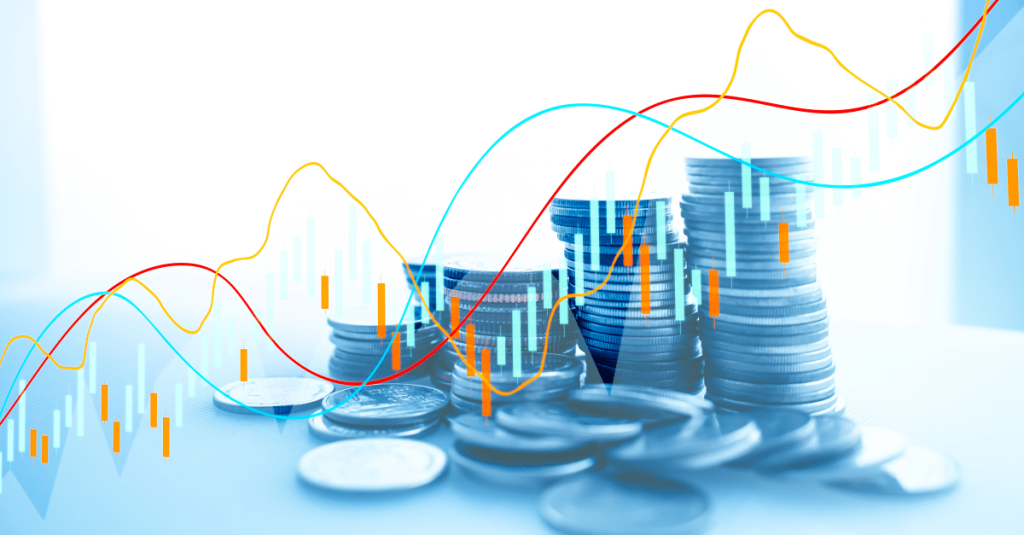Stock market never seems to be happy without something horrible about which it can complain or worry. After a global pandemic passed, investors have turned their attention to the old bugaboo of 1970s, ” Inflation”.

You can see from the long subtitle that inflation is one of the most misunderstood concepts in investment. Each policymaker, economist and investor have a different view of inflation. Most of these views are influenced by the rapidly rising interest rates in the 1970s. Every model, forecast and policy decision is based on inflation calculations. Real vs. nominal data are based on the inflation rate. And of course, an entire asset category (Treasury Inflation-Protected Securities) has been created to help protect investors from inflation.
In reality, the experience of the last fifty years does not support any of the traditional thinking about inflation. Classic Keynesian thought, for example, could not explain the stagflation in the 1970s when inflation was sky high and the economy stagnant. Fast forward to today, when we have record low interest rates despite multi-trillion-dollar annual government budget deficits. It wasn’t meant to be.
If you look deeper, the majority of the investing community is not convinced by the inflationary claims. We thought that we’d lay out all the facts to try to get a clearer understanding of this economic concept.
What is inflation?
Inflation was not defined as a price-based phenomenon until the 1970s. The dramatic rise in interest rates and prices brought the term “inflation”, to the fore of public consciousness. The monetarist idea that money supply increased caused “inflation”, gained more traction as Keynesian thought, which dominated the post-war period, was unable to explain the “stagflation”.
What are the prices we’re measuring? How do we weigh them?
Everyone has their personal inflation rates, which vary depending on your socioeconomic standing and personal consumption habits. The concept of “inflation” does not fit all.
What causes inflation?
Many people believe that inflation increases when an economy becomes too strong or the government prints excessive money.
But that is also not the case. It’s important to note that this wasn’t the case throughout the 1970s. Imagine the period 1983-2007. It was an amazing period of economic growth. The U.S. economic growth was unstoppable, despite two minor and insignificant recessions. Globalism and technological advancements created unimaginable businesses and new opportunities. The interest rates have been falling steadily over the past 25 years.
In terms of inflation and interest rate, the 2008-current period represents a new, unexplainable period. We know that rates in the U.S. have been at zero for most of this time, while they are negative elsewhere. The federal deficits have reached levels never before imagined. Until the year 2021, inflation was remarkably low. Interest rates will remain historically low even after 2021.
We are therefore sceptical of the arrogant notion that the Federal Reserve Board, and much of Wall Street believe, that it understands the causes of inflation, and is able to nudge the economy in the right direction by changing interest rates here and there. We find it arrogant and foolish to think that the Federal Reserve Board “needs” to achieve 2% inflation, at which point we could simply put the brakes the economy.
How can we measure inflation?
The investment geeks will be able to get down and dirty with how governments weight and measure price changes in real life. We conclude that there is no way to do this in a manner that helps policy-making and that it makes any sense. By assigning false accuracy, we end up doing far more harm than benefit.
How should we measure changes in home prices? Hah, trick question! It turns out that home ownership is NOT included at all in CPI. BLS views home ownership as a form of capital investment, similar to stocks and bonds. As such, home prices are not included in the CPI. The BLS measures rentals using the concept of owner’s comparable rent. Rents reset every year for the same products, which gives a lot of data and an approximation to rents.
Rents were a good proxy for house prices until about the middle of 2000s. What happens if home prices boom or crash, but rents do not change? We have now a measurement issue that produces a statistic which is in stark contrast with reality.
But em>none/em> of that was reflected in the CPI, which is reported as 3.4% in 2005, 3.2% for 2006, and 2.9% for 2007. None showed up in CPI. The CPI was reported at 3.4% in 2007, 2.9% in 2008, 3.2% and 3.4% respectively.
Each person has their own inflation rate that is probably impossible to calculate. While we all share the same expenses (food, clothes, and shelter), each one of us may be at a different stage of life and be affected by other factors such as medical costs, educational expenses, and childcare expenses.
It is unlikely that such data will lead to a successful outcome for monetary policy and fiscal policies, as well as the Cost-of-Living Adjustment (“COLA”) of Social Security beneficiaries.
Why are we so afraid of inflation?
The inflation of the 1970s, even though it was 40-50 years back now, still left scars in the minds of policymakers and market participants. Although inflation can be difficult to quantify, it’s clear that an increase in overall interest rates will occur if prices continue to rise. Higher rates are likely to cause a drop in prices, since all real and financial assets have some form of discounting mechanism based on interest rate. We are also starting at historically low interest rates, so a 2% absolute rise in the rate will reduce asset values much more mathematically than it would have done previously.
The conclusion of the article is:
Inflation is a complex topic. We have tried to sum it up with bandages. This is the typical rabbit hole where you go in one direction but end up in another.
What is the correct answer if you think Keynes, Friedman and Buffett are misguided on important issues of inflation?
Unfortunately, we can’t know. Today, the big debate is about whether or not 2021’s large “inflation burst” is temporary. We lean towards “transitory,” but we have a low level of confidence. What is the correct definition of “transitory” – six month, one year or three years? Nobody knows.
We are confident, though, that by heavily relying on the “inflation numbers” as they have been calculated, the Federal Reserve Board has and will continue to make serious policy mistakes. We find the concept of ‘inflation-targeting,’ whereby Fed officials can manipulate inflation up to a specific level before stopping it there dangerous and full of hubris. Watch out for mistakes caused by inflation-targeting overconfidence.
We hope, if nothing else that you will now respond with the following phrase when someone talks about inflation: It’s not as simple as it seems!




